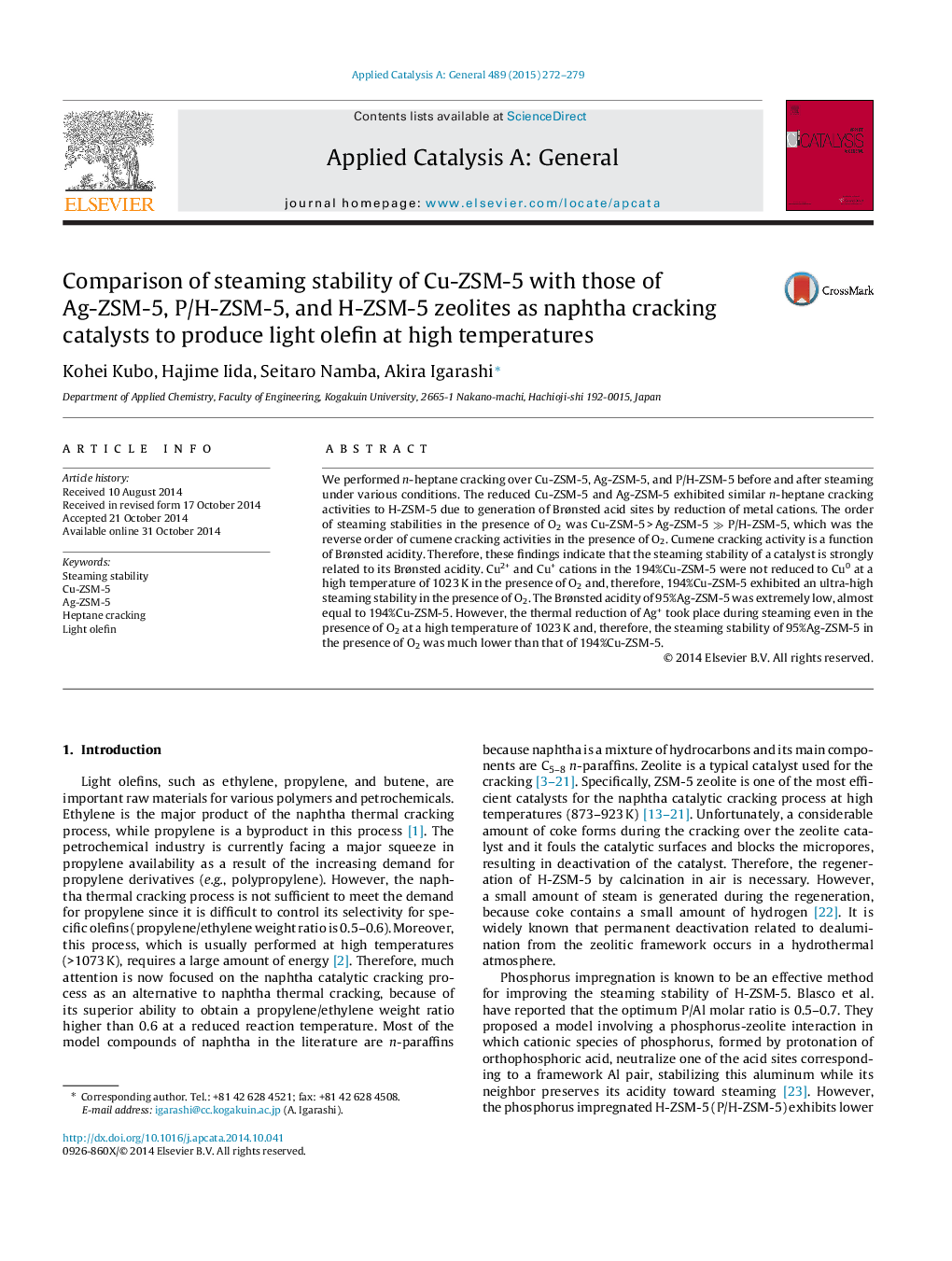| Article ID | Journal | Published Year | Pages | File Type |
|---|---|---|---|---|
| 39420 | Applied Catalysis A: General | 2015 | 8 Pages |
•The reduced Cu-ZSM-5 and Ag-ZSM-5 exhibit similar activity to H-ZSM-5.•The order of steaming stabilities is Cu-ZSM-5 > Ag-ZSM-5 ≫ P/H-ZSM-5.•194%Cu-ZSM-5 exhibits an ultra-high steaming stability in the presence of O2.•The steaming stability is strongly related to the Brønsted acidity.
We performed n-heptane cracking over Cu-ZSM-5, Ag-ZSM-5, and P/H-ZSM-5 before and after steaming under various conditions. The reduced Cu-ZSM-5 and Ag-ZSM-5 exhibited similar n-heptane cracking activities to H-ZSM-5 due to generation of Brønsted acid sites by reduction of metal cations. The order of steaming stabilities in the presence of O2 was Cu-ZSM-5 > Ag-ZSM-5 ≫ P/H-ZSM-5, which was the reverse order of cumene cracking activities in the presence of O2. Cumene cracking activity is a function of Brønsted acidity. Therefore, these findings indicate that the steaming stability of a catalyst is strongly related to its Brønsted acidity. Cu2+ and Cu+ cations in the 194%Cu-ZSM-5 were not reduced to Cu0 at a high temperature of 1023 K in the presence of O2 and, therefore, 194%Cu-ZSM-5 exhibited an ultra-high steaming stability in the presence of O2. The Brønsted acidity of 95%Ag-ZSM-5 was extremely low, almost equal to 194%Cu-ZSM-5. However, the thermal reduction of Ag+ took place during steaming even in the presence of O2 at a high temperature of 1023 K and, therefore, the steaming stability of 95%Ag-ZSM-5 in the presence of O2 was much lower than that of 194%Cu-ZSM-5.
Graphical abstractFigure optionsDownload full-size imageDownload high-quality image (106 K)Download as PowerPoint slide
